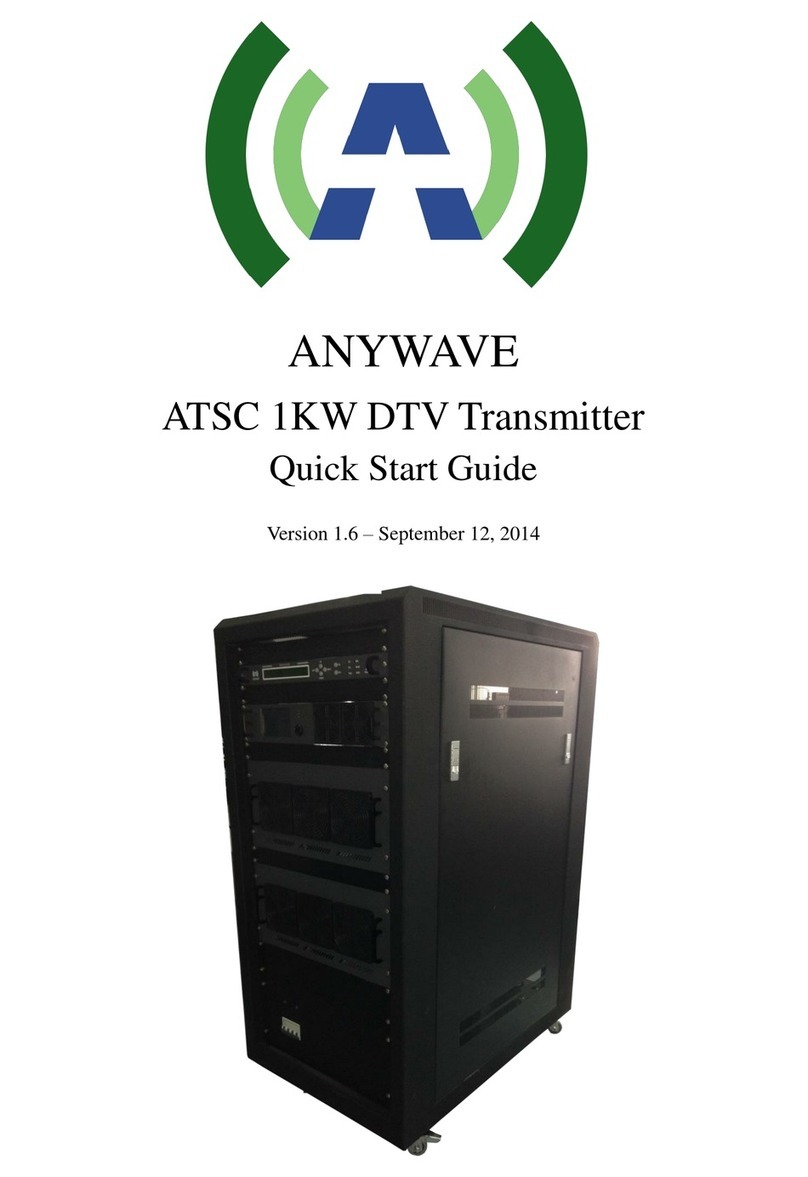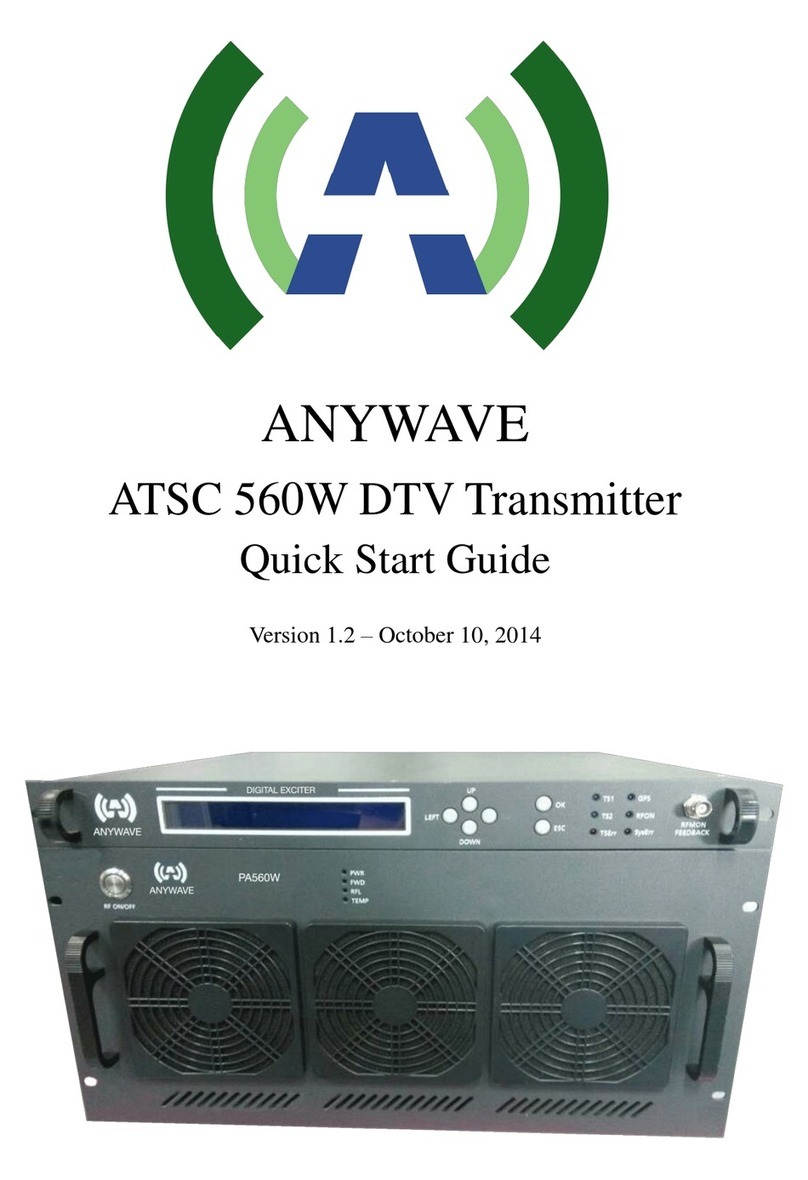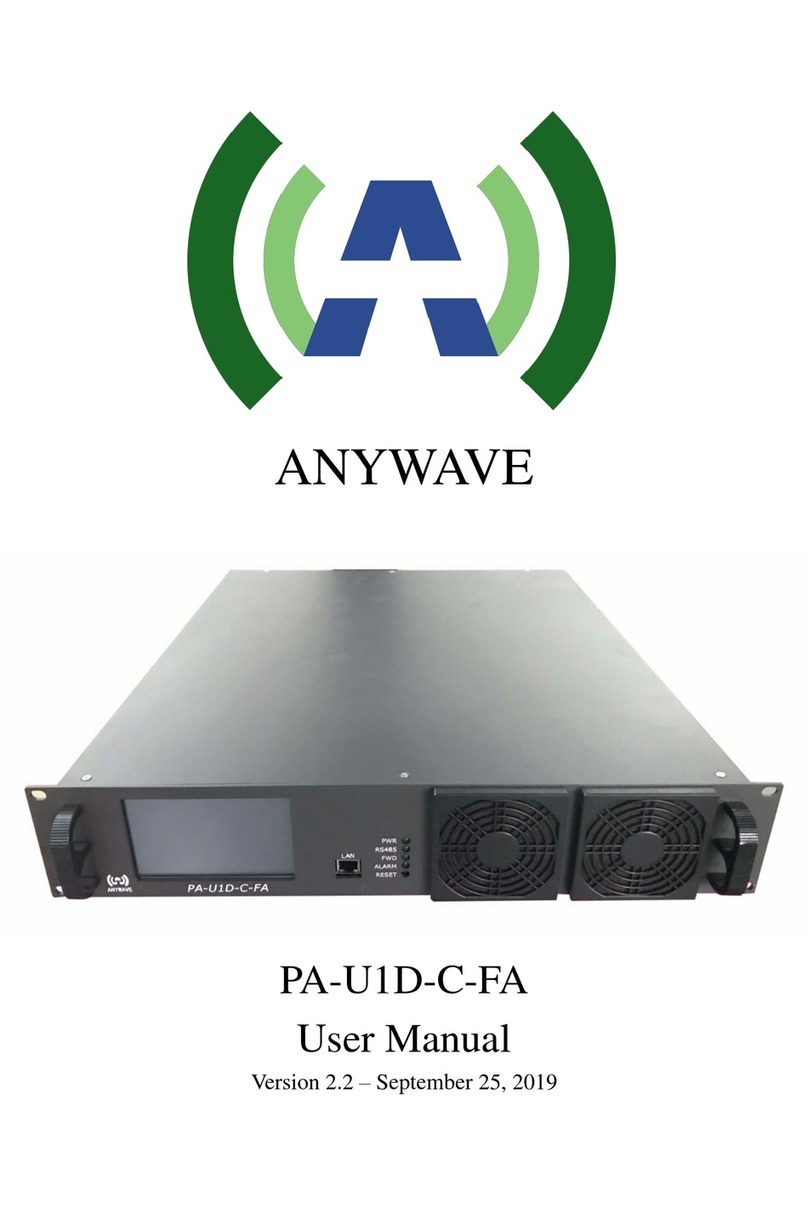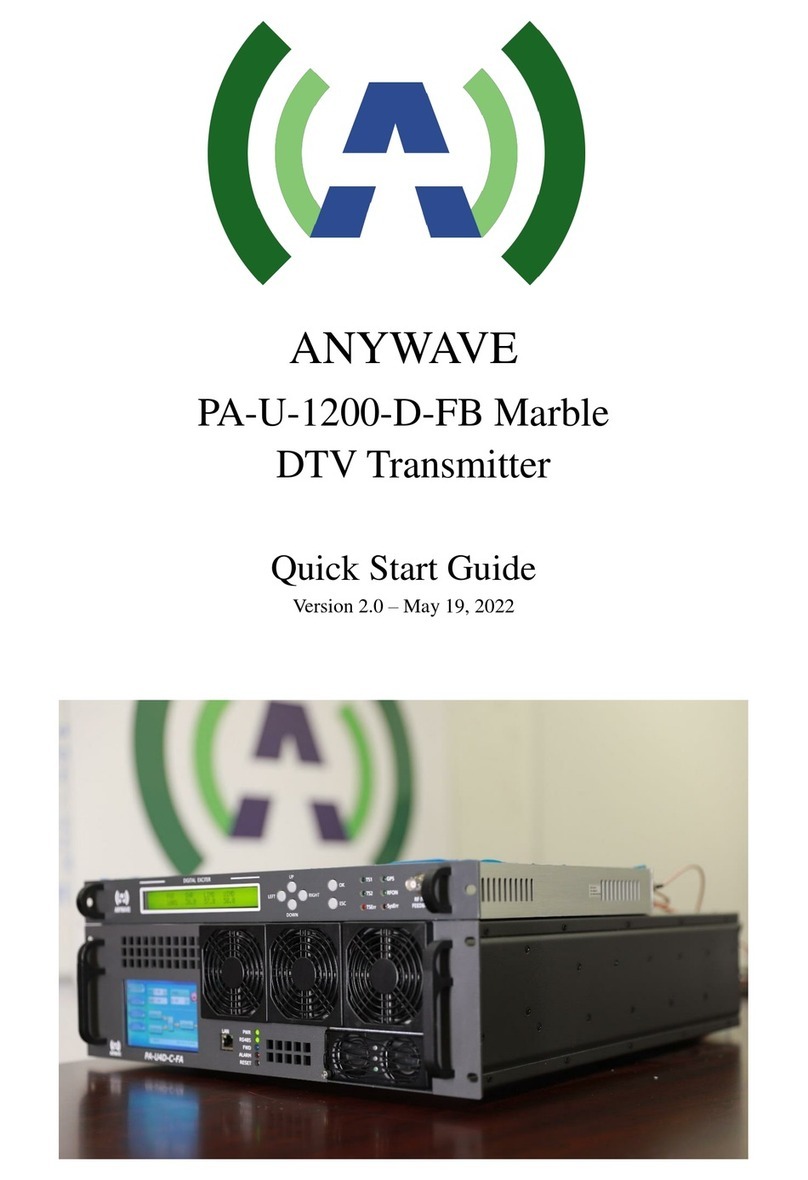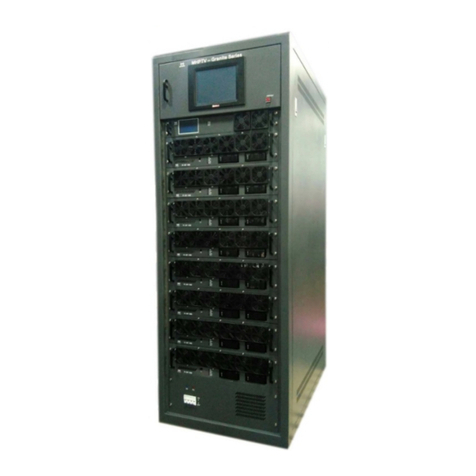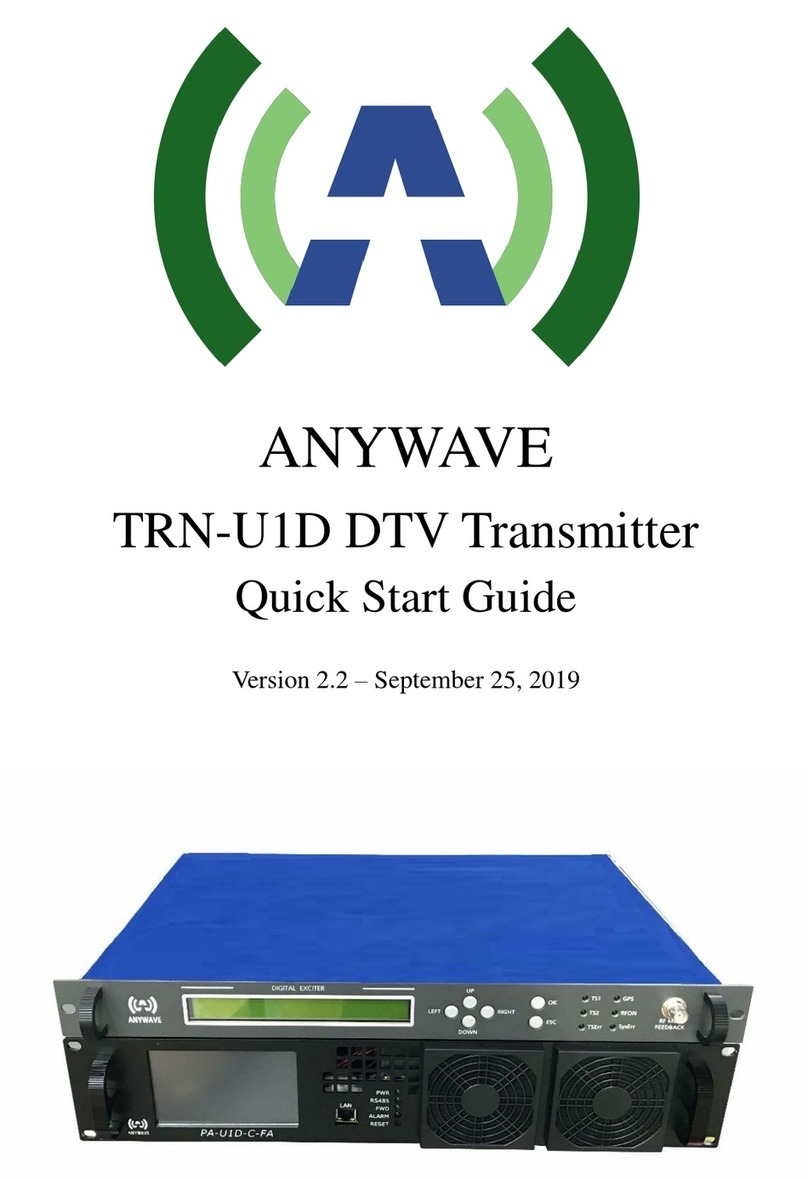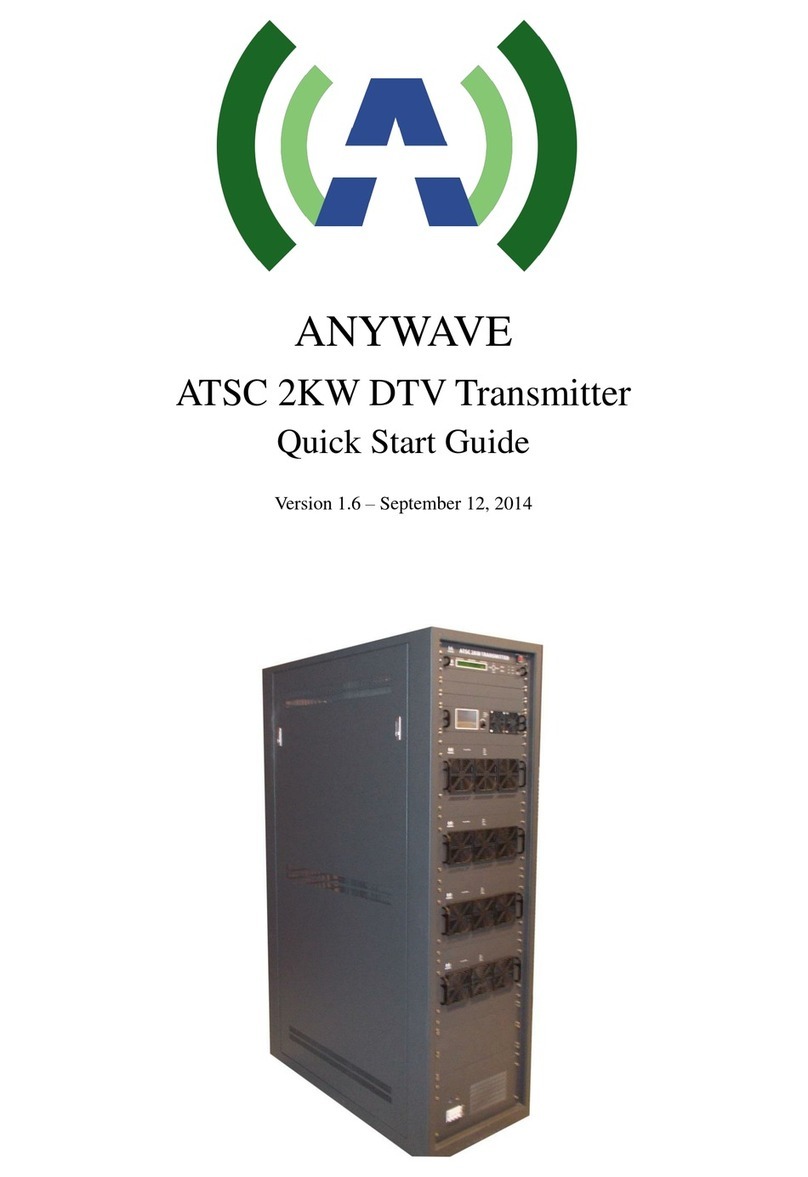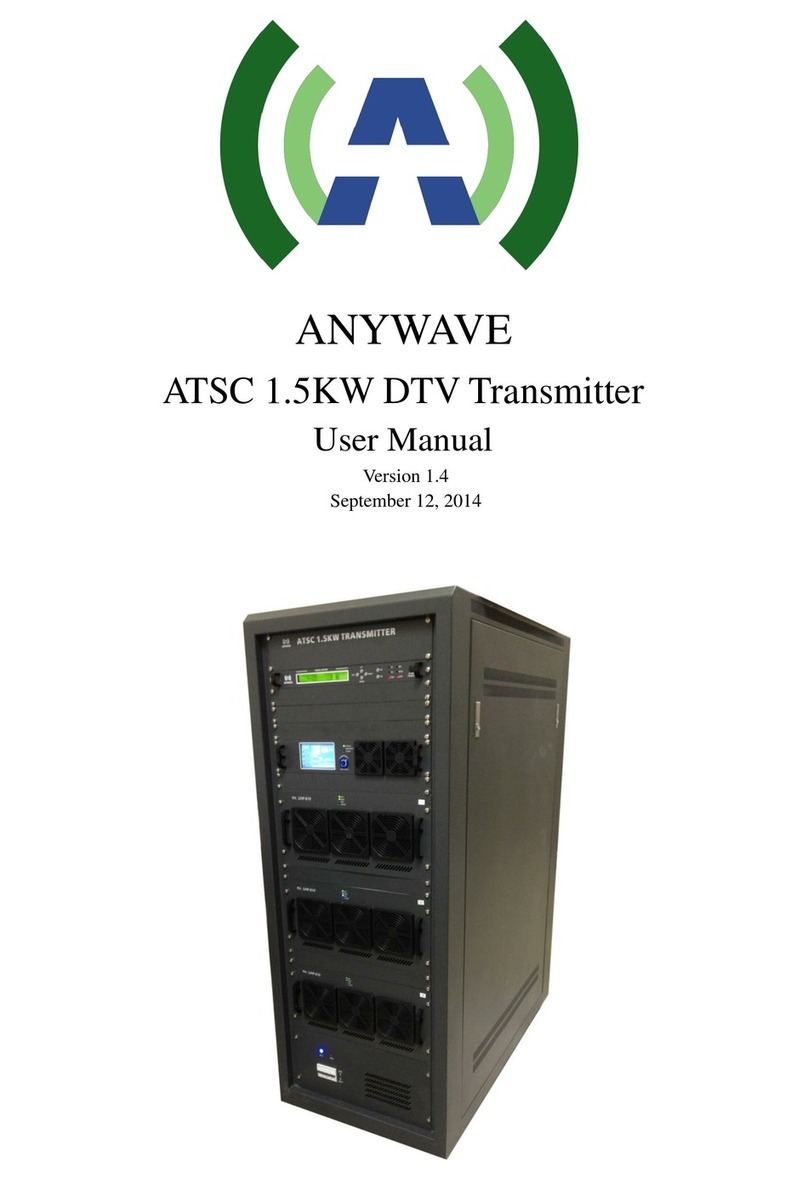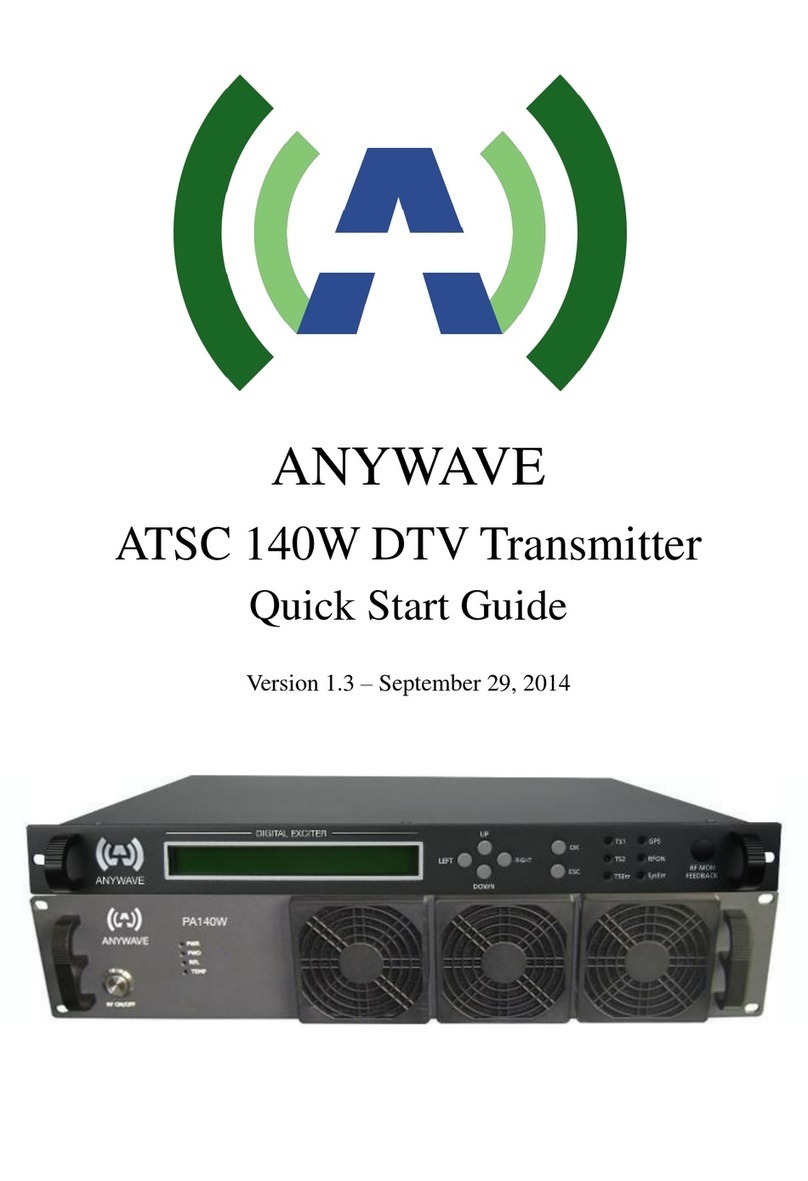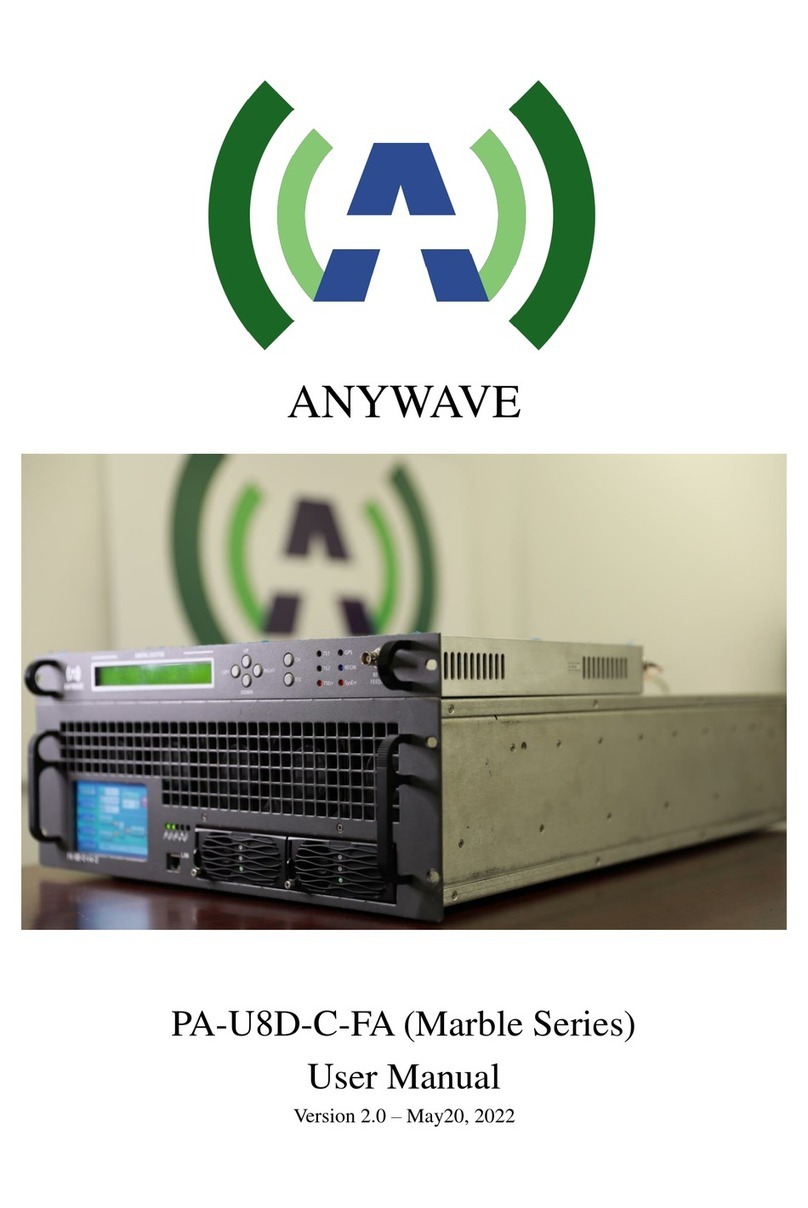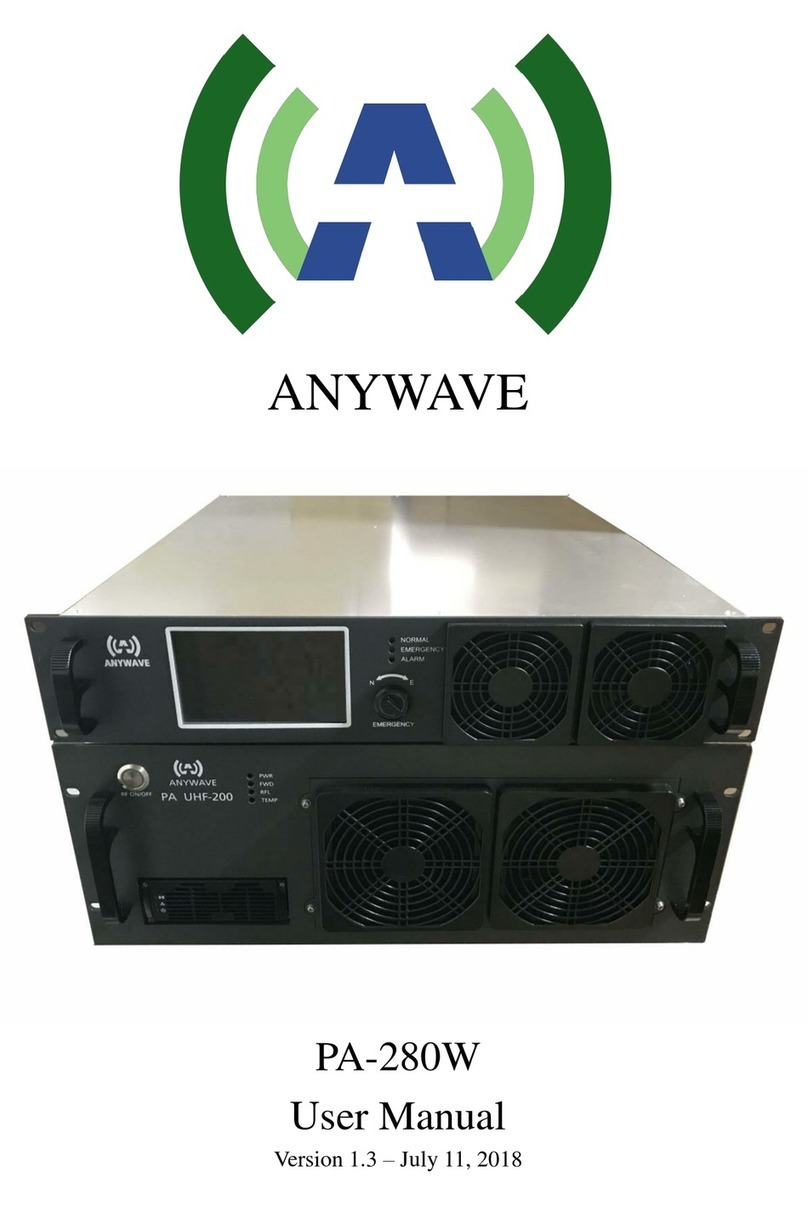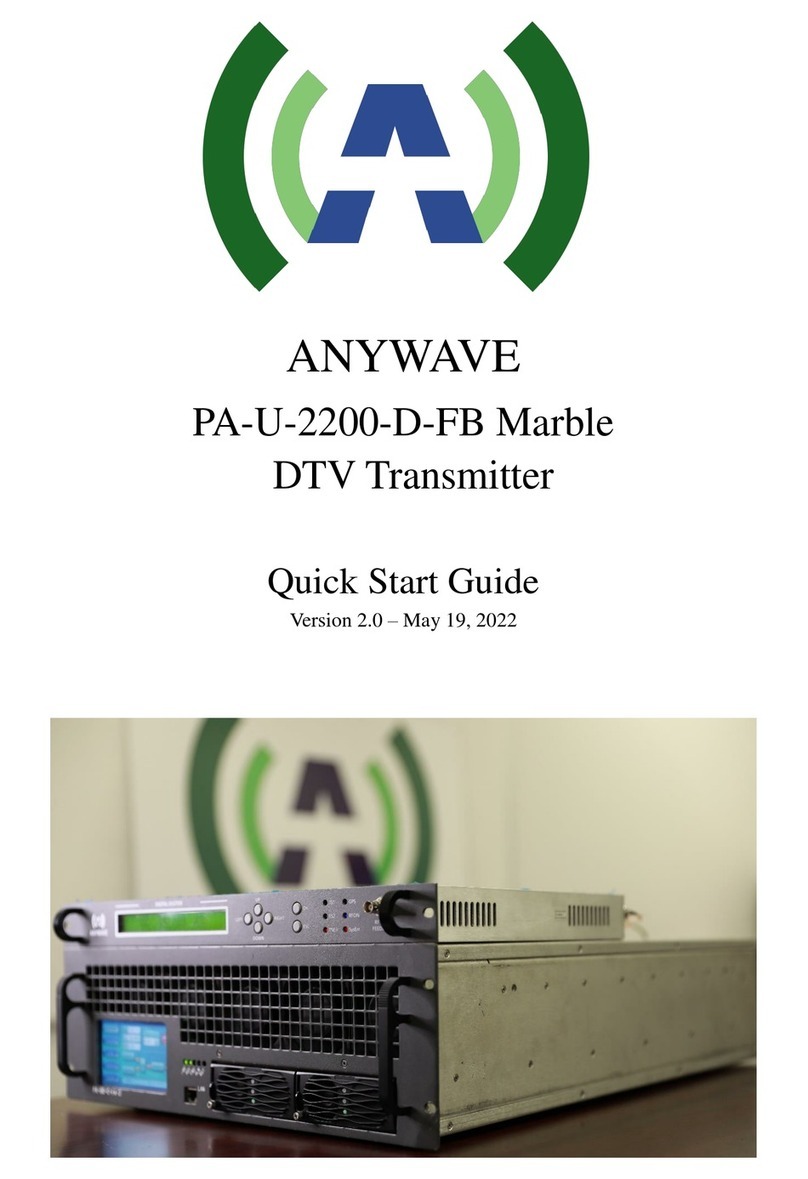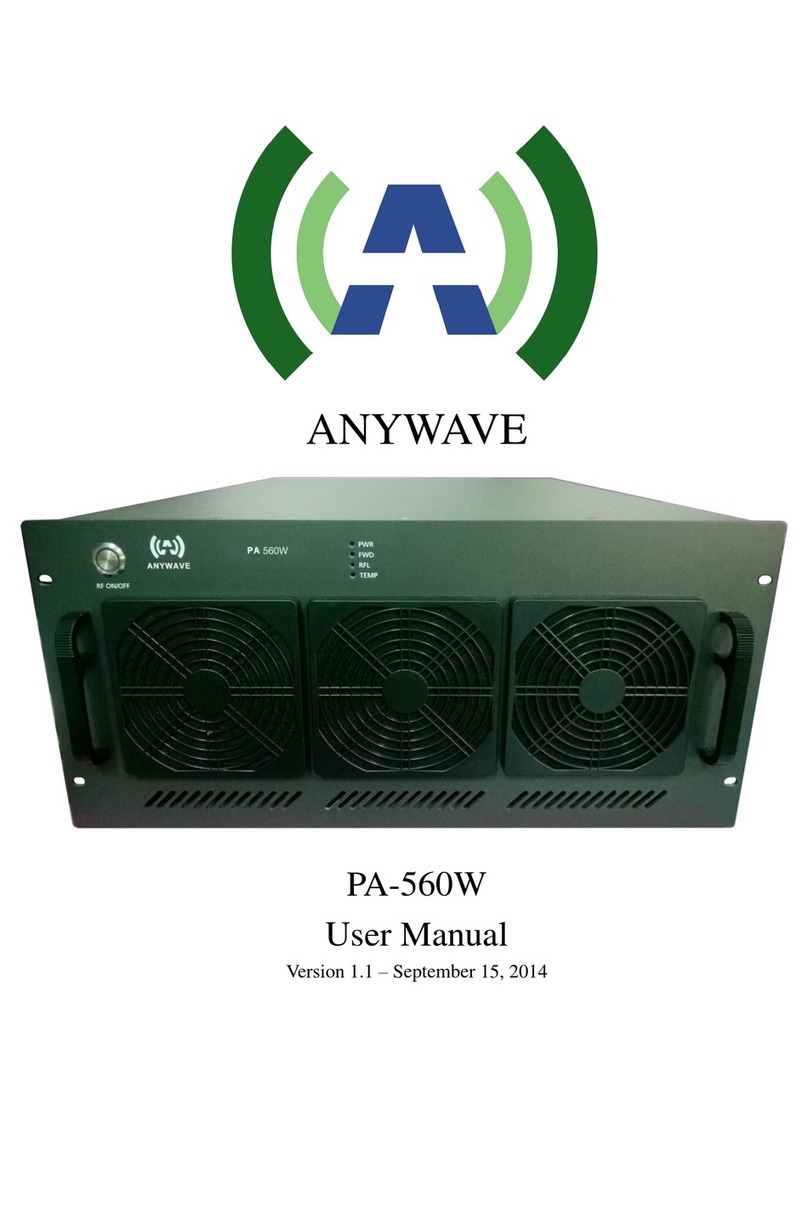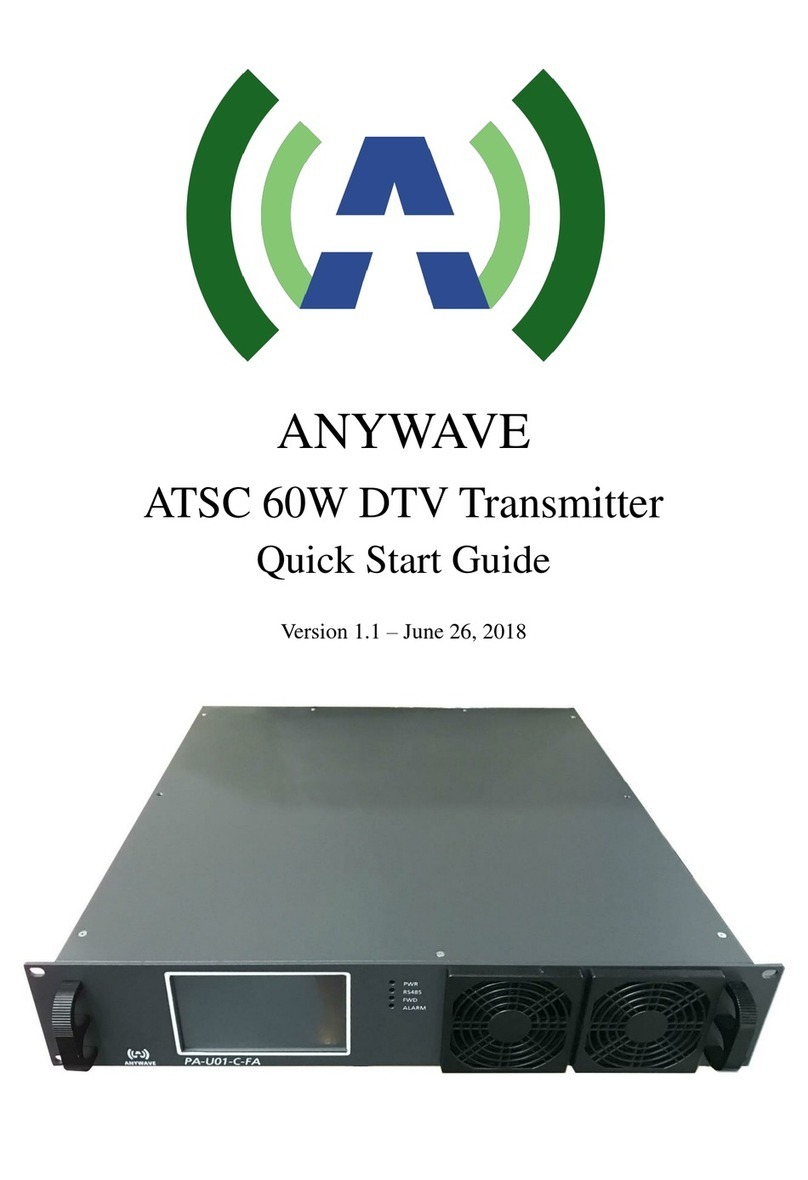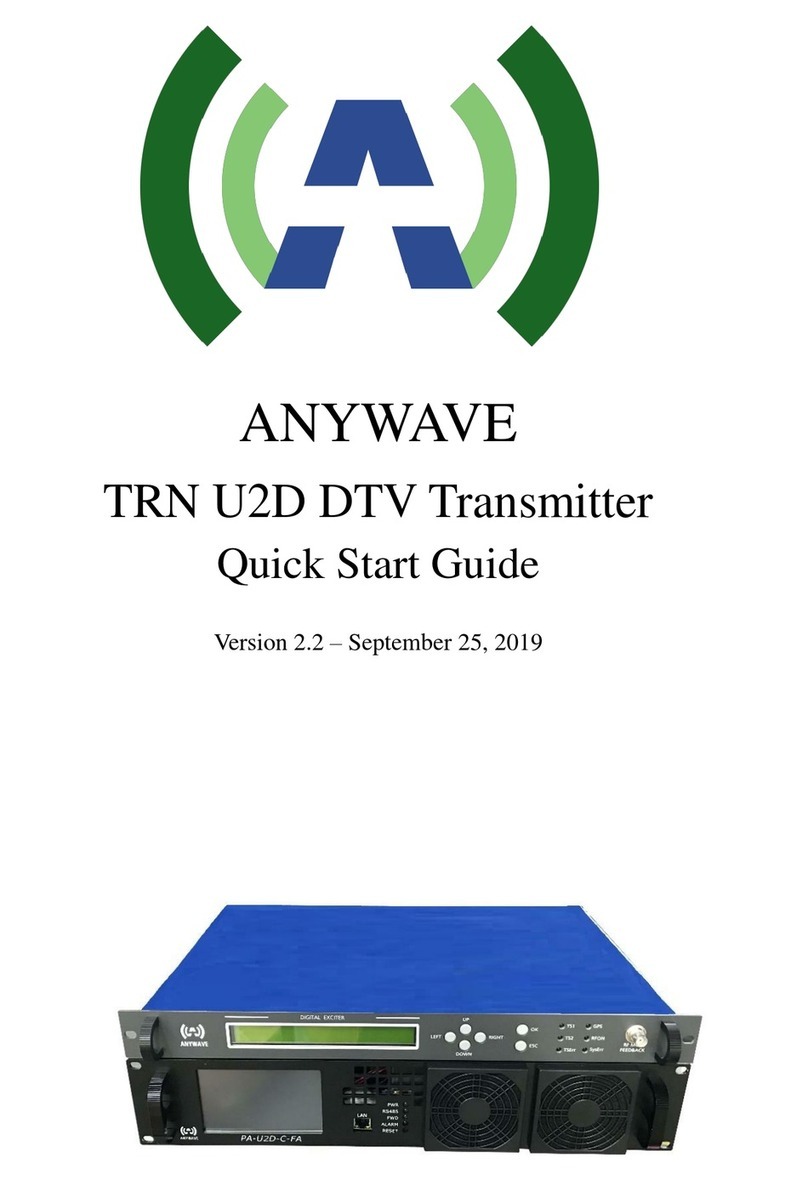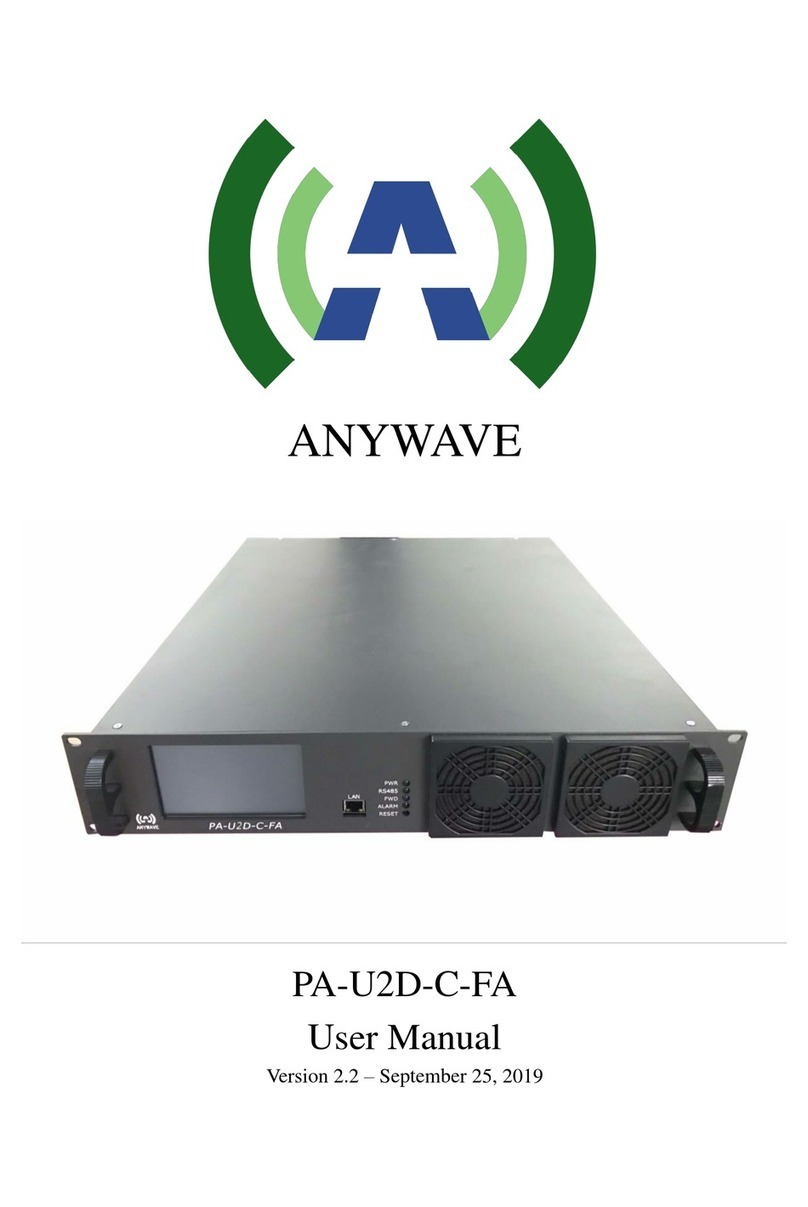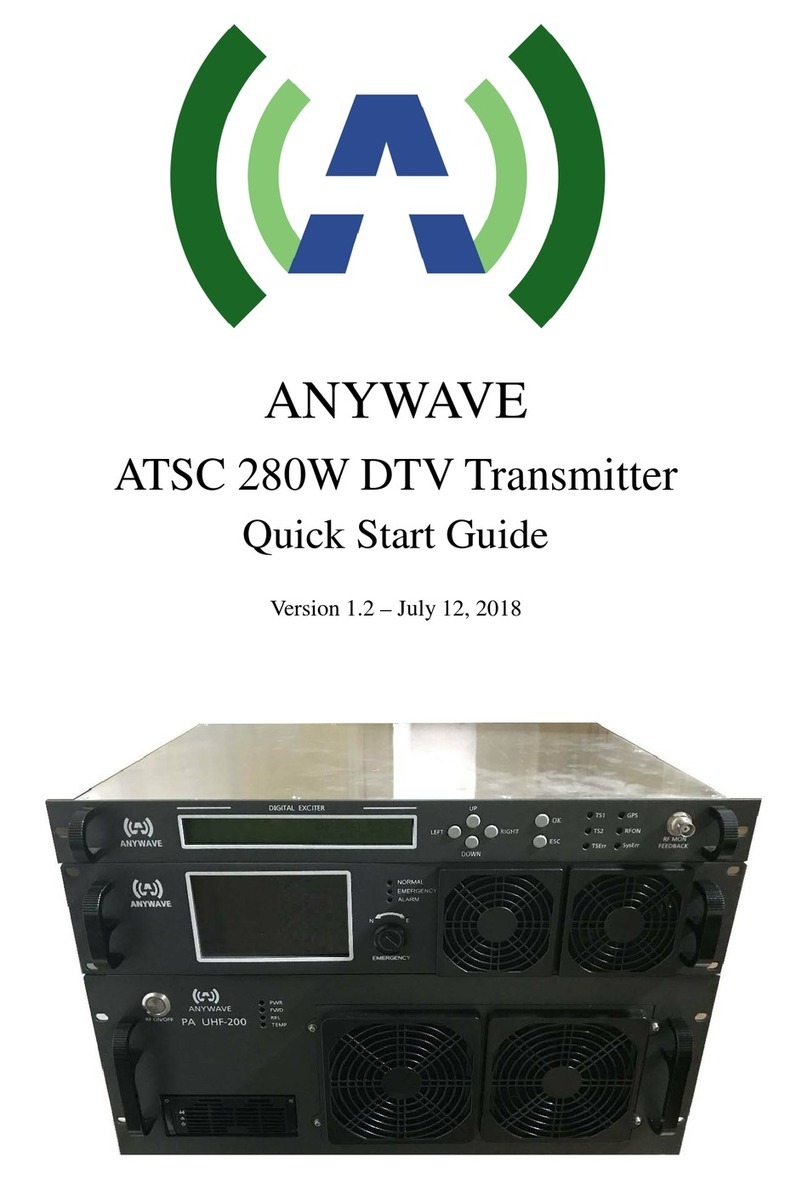
MPTV V1 TX User Manual
MPTV-V1-1KW-USR-DOC-V1.0, 05/25/2018 Page 5 of 96
Contents
1. Introduction...................................................................................7
1.1 TX Overview ...........................................................................................................7
1.2 TX Specifications...................................................................................................12
1.3 AC Power Requirements........................................................................................13
1.4 RF System Connections.........................................................................................15
1.5 TX Ventilation........................................................................................................17
2. Theory of Operation...................................................................18
2.1 Control Unit...........................................................................................................20
2.2 Digital Exciter........................................................................................................23
2.3 Power Amplifier – PA-VI4-C-FA...........................................................................25
3. Installation/Initial Turn-On.......................................................28
4. Operational Basics......................................................................35
4.1 TX ON/OFF...........................................................................................................35
4.2 RAISE/LOWER POWER......................................................................................36
4.3 RUNNING CORRECTIONS ................................................................................37
4.4 CALIBRATE EXCITER FWD POWER METER.................................................41
4.5 CALIBRATE TX SYSTEM POWER METERS...................................................42
5. Local (Touch Screen) User Interface.........................................50
5.1 HOME SCREEN ...................................................................................................50
5.2 A/B EXCITER ICON SCREEN............................................................................52
5.3 AMPLIFIER ICON SCREEN ...............................................................................55
5.4 CONFIG SCREEN ................................................................................................58
5.5 LOG SCREEN.......................................................................................................67
5.6 CONTROL SCREEN.............................................................................................68
5.7 HELP SCREEN .....................................................................................................69
6. Web Interface..............................................................................70
